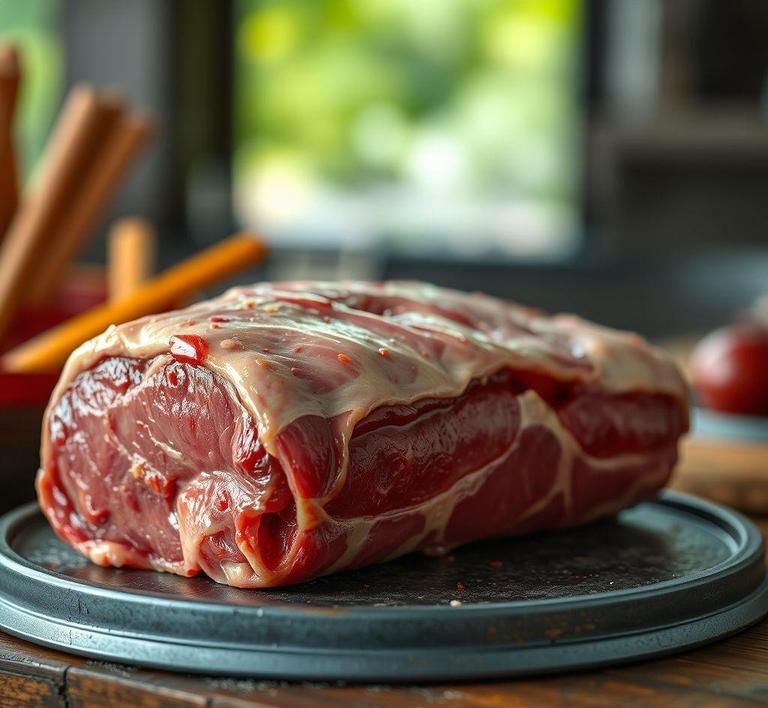Refreezing uncooked meat is a topic that sparks a lot of questions and debates in the kitchen. Many people wonder if it’s safe to refreeze meat once it’s been thawed, and whether it affects its texture, flavor, or safety. While the general rule is that you can refreeze meat, there are a few important guidelines to keep in mind to ensure the process doesn’t lead to any health risks or loss of quality. In this guide, we’ll walk you through the best practices for refreezing uncooked meat, when it’s okay to do so, and tips on how to preserve the taste and texture of your favorite cuts. Let’s dive into how you can handle your frozen meat like a pro!
Can You Refreeze Uncooked Meat?

The question of whether it’s safe to refreeze uncooked meat is one that has sparked debate in kitchens around the world. The short answer is: yes, but with important considerations. Let’s break down the science and food safety guidelines behind it.
When you buy fresh meat, whether it’s beef, chicken, lamb, pork, or any other type, it is typically frozen to maintain its freshness and shelf life until you’re ready to use it. However, once thawed, the meat enters a different stage in its shelf life, and the clock starts ticking on how much time you have to cook it before it becomes unsafe to consume.
Refreezing uncooked meat after it has thawed is safe in certain circumstances, but it’s important to note that you can only safely refreeze meat that has thawed in the refrigerator and not at room temperature. This is because bacteria grow rapidly when meat is left at room temperature, making it risky to refreeze it once bacteria have had a chance to multiply.
If your uncooked meat has been in the fridge, and it hasn’t been more than 1-2 days after thawing (depending on the type of meat), you can refreeze it, although this comes with a few caveats, which we’ll explore later. Refreezing meat that’s been sitting out for more than two hours at room temperature, however, is not recommended due to the risk of foodborne illness. Once meat has been defrosted using methods like running water, microwave thawing, or being left out at room temperature, it should be cooked immediately to ensure safety.
How To Refreeze Uncooked Meat?
Refreezing uncooked meat is all about the right handling and ensuring that it hasn’t been exposed to unsafe temperatures or left out too long. If you’ve thawed your uncooked meat in the fridge (which is key), here’s a step-by-step guide on how to safely refreeze it:
-
Check The Meat’s Condition
Before refreezing, inspect the meat for any signs of spoilage. It should still look, smell, and feel fresh. If it’s developed an off odor, sliminess, or discoloration, it’s better to cook it right away rather than risk refreezing it.
-
Repack The Meat Properly
If you’re planning to refreeze uncooked meat, it’s crucial to wrap it tightly to prevent freezer burn. You can use heavy-duty plastic wrap, aluminum foil, or freezer-safe bags. The goal is to minimize exposure to air, which can degrade the quality of the meat. If you’re working with ground meat, it’s also helpful to divide it into smaller portions so that it freezes and thaws more evenly.
-
Label And Date
It’s a good practice to label the meat with the date it was originally frozen and the date you are refreezing it. This helps you track how long it has been in the freezer, as meat should ideally be used within a few months to maintain optimal quality.
-
Freeze Immediately
Place the repackaged meat back into the freezer as quickly as possible. Don’t let it sit on the counter, as any period of time spent at room temperature can allow bacteria to grow, making it unsafe to refreeze.
-
Keep It Cold
To avoid fluctuations in temperature, make sure your freezer stays at a consistent temperature of 0°F (-18°C) or lower. Avoid opening the freezer door too often, as it can cause the temperature to rise, which can impact the meat’s safety and quality.
Quality Impact
While it is technically safe to refreeze uncooked meat under the right conditions, there is a definite impact on the quality of the meat after the process. Freezing and thawing cause cellular damage in meat, which can affect its texture, moisture content, and flavor. Here’s a breakdown of how each factor can be influenced:
-
Texture
When meat is frozen, ice crystals form within the muscle fibers. These ice crystals can rupture the cell walls and break down the tissue, which results in a less firm texture. After thawing, the meat can become mushy or watery, and if refrozen, this effect is amplified. For example, a steak that is refrozen might lose its original juicy texture and become tougher or drier when cooked.
-
Moisture Loss
One of the most noticeable effects of freezing and refreezing meat is moisture loss. During freezing, some of the water inside the meat turns to ice, and when it’s thawed, that moisture is lost. This means that the meat will be less juicy and could dry out more quickly when cooked, resulting in a less appetizing final dish.
-
Flavor Deterioration
The longer meat stays frozen, the more it can lose flavor. While this doesn’t necessarily mean that refrozen meat is unsafe to eat, it can taste blander or less rich than fresh or single-frozen meat. Additionally, the repeated freezing can lead to freezer burn, which occurs when air reaches the meat’s surface, causing it to dry out and develop an off-flavor.
-
Freezer Burn
Freezer burn is a common concern with refrozen meat. This happens when air comes into contact with the surface of the meat, causing dehydration and oxidation. It typically presents itself as discolored patches on the meat, such as grayish or whitish spots. While freezer-burned meat is still safe to eat, the texture and flavor will be compromised.
Is It Safe To Refreeze Uncooked Meat?
The question of whether it’s safe to refreeze uncooked meat is one that often arises in kitchens, especially when we find ourselves with leftovers or meat that hasn’t been fully cooked before its initial freezing. The short answer is: it can be safe under certain conditions. However, there are a few key factors to consider before you decide to refreeze any uncooked meat.
When you freeze meat, the process slows down bacterial growth, preserving its freshness and preventing spoilage. However, once the meat begins to thaw, the bacterial growth resumes, albeit at a slower rate. Refreezing meat that has been thawed and left out at room temperature for too long can allow harmful bacteria to proliferate, increasing the risk of foodborne illnesses.
The Key Conditions Under Which Refreezing Meat Is Safe
- If the meat was thawed in the refrigerator: If the meat has been kept at a safe temperature (below 40°F or 4°C) throughout the thawing process, it is generally safe to refreeze it. This is because the low temperature prevents the growth of bacteria, maintaining the meat’s safety for refreezing.
- If the meat was thawed in the microwave or cold water: If you used the microwave or cold water method to thaw the meat, it should be cooked immediately after thawing. Refreezing it without cooking it first can cause bacterial growth and spoilage.
In short, thawing in the fridge is key to keeping the meat safe for refreezing, whereas thawing at room temperature or by other methods increases the risk of bacterial contamination.
Signs That Uncooked Meat Should Not Be Refrozen
There are several signs that can indicate whether uncooked meat is no longer safe to refreeze. While meat can look fine on the surface, it’s important to consider both visual and sensory cues, as well as how the meat was handled throughout the thawing process. Here are the major signs to look out for:
1. Unpleasant Smell
The most obvious indicator that meat should not be refrozen is a foul odor. When meat spoils, it gives off a sour or ammonia-like smell due to the breakdown of proteins and bacteria growth. If the meat smells off, it should be discarded immediately, as refreezing it could not only make you sick but would not make the meat safe to eat even if you cook it thoroughly.
2. Slimy Texture
If the surface of the meat feels slimy or sticky, this is a sign that the meat has begun to spoil. While a slightly tacky texture might be common right after thawing, a noticeably slimy surface is indicative of bacterial growth, and it is best to avoid cooking or refreezing this meat.
3. Color Changes
While the color of meat can change naturally as it is exposed to oxygen (a process known as oxidation), an unnatural change in color can signal spoilage. For example, if ground beef turns from red to brown or gray, or if poultry appears greenish or blotchy, it is likely unsafe to refreeze.
4. Thawed For Too Long
If the meat has been thawed and left out at room temperature for more than two hours, or if the refrigerator temperature was above 40°F (4°C), it could have entered the danger zone for bacterial growth. In this case, refreezing would not be safe.
Common Refreezing Mistakes
There are several common mistakes people make when it comes to refreezing uncooked meat, and avoiding these can help ensure both safety and quality:
1. Refreezing Meat Thawed At Room Temperature
One of the biggest mistakes is refreezing meat that has been thawed at room temperature for several hours. This is particularly problematic because bacteria multiply rapidly between 40°F and 140°F, known as the "danger zone." If meat has been in this zone for more than two hours (or one hour on very hot days), it’s unsafe to refreeze, even if it’s cooked afterward.
2. Refreezing Without Cooking
Some people mistakenly assume that refreezing raw meat is safe as long as it’s properly stored. However, while thawing and refreezing cooked meat is safer (due to the elimination of bacteria during cooking), raw meat should generally be cooked before being refrozen if it has been thawed improperly. This ensures that any bacteria present are killed before refreezing.
3. Refreezing Meat Multiple Times
Every time meat is frozen, thawed, and refrozen, its quality decreases. This is especially true for uncooked meat. The more times it’s refrozen, the more moisture is lost, resulting in a dryer and tougher texture. Over time, this leads to a loss of flavor and overall quality. For best results, limit the number of times meat is frozen and always store it properly to maintain flavor.
4. Not Using Proper Storage Containers
When refreezing meat, using inadequate storage containers or simply using plastic bags that are not properly sealed can result in freezer burn. This occurs when the meat is exposed to air, causing dehydration and texture changes. Always use airtight, freezer-safe containers or vacuum-sealed bags to prevent freezer burn and preserve the meat’s quality.
Tips And Tricks For Refreezing Meat Safely
To refreeze meat safely and minimize the risks associated with bacterial growth, here are some essential tips and tricks:
1. Thaw Meat In The Refrigerator
Always thaw meat in the refrigerator rather than on the countertop. This keeps it at a safe temperature, ensuring that bacteria won’t have the chance to multiply.
2. Use A Meat Thermometer
If you’re unsure whether meat has been properly thawed or cooked, use a meat thermometer to check its internal temperature. Cooked meat should reach a minimum internal temperature of 165°F (74°C) for poultry and 160°F (71°C) for ground meats.
3. Store Meat In Smaller Portions
To avoid refreezing large quantities of meat that might go to waste, it’s a good idea to freeze it in smaller portions. This makes it easier to thaw only what you need, reducing the chance of unnecessary refreezing.
4. Label And Date Meat Packages
Always label frozen meat with the date it was frozen. This helps you keep track of how long it’s been in the freezer. Ideally, meat should be used within 3-6 months of freezing for the best flavor and texture, although it can remain safe to eat for longer.
5. Use Vacuum Sealing
Vacuum-sealing meat before freezing reduces air exposure, preventing freezer burn and extending the meat’s shelf life. You can also vacuum-seal small portions of meat, making it easier to thaw only what you need.
Conclusion
Refreezing uncooked meat is a practice that comes with risks, but it can be done safely with the right precautions. The most important factor is to ensure the meat has been thawed properly, in the refrigerator, where it is kept at a safe temperature. Once thawed, you should check for signs of spoilage, like bad odor or slimy texture, to ensure the meat is still safe to eat. Refreezing meat that has been thawed at room temperature or left out for too long can result in the growth of harmful bacteria and increase the risk of foodborne illness.
By understanding the nuances of refreezing, avoiding common mistakes, and following simple safety tips, you can make sure that your meat remains safe and flavorful when refrozen. Proper storage, use of airtight containers, and careful thawing methods can all contribute to keeping your frozen meat in top condition.


